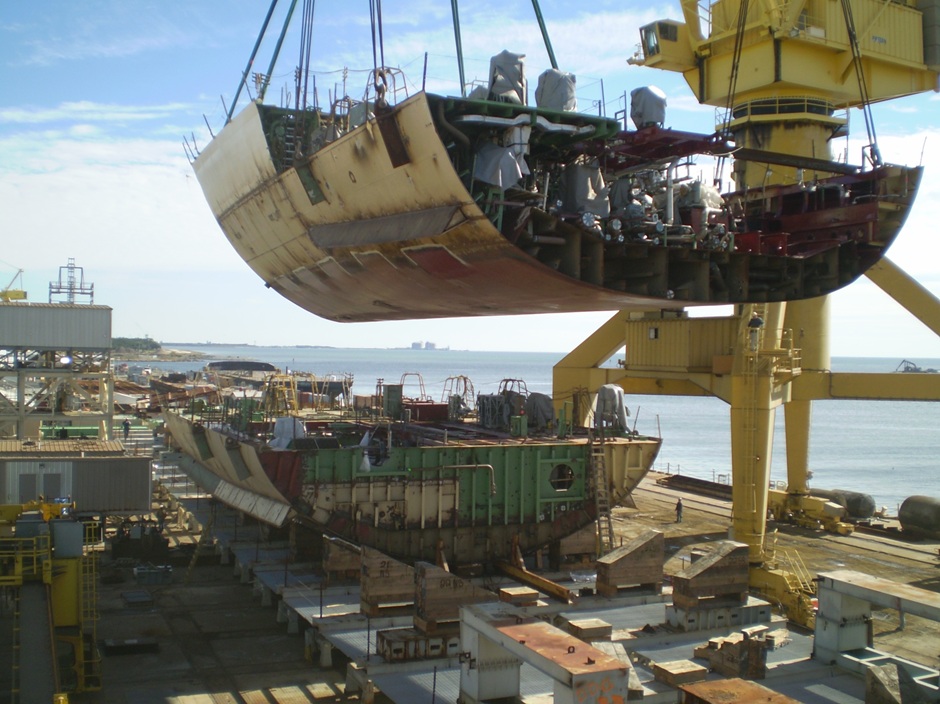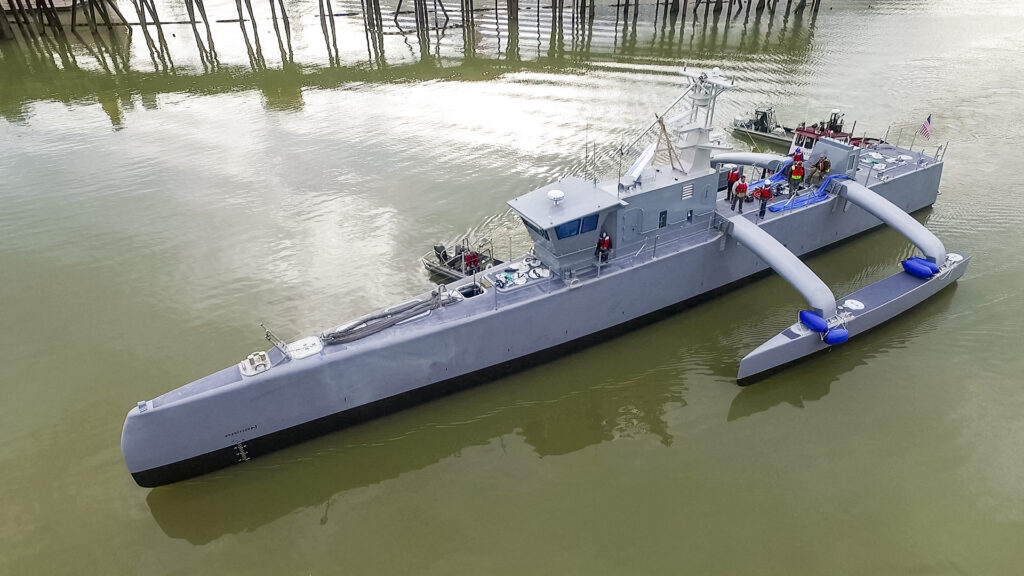
The future USS Finn (DDG-113) under construction in Pascagoula, Miss.
ANNAPOLIS: The President, Congress and the Navy now all want the fleet to grow from the current 278 ships to 355, but that will probably take until the 2050s, the Navy’s No. 2 civilian said Wednesday.
“To quote the Rolling Stones, you can’t always get what you want,” said Thomas Dee, who has served for eight months as Navy Undersecretary in the absence of a Trump nominee. “So we may want a 355-ship navy. We may want it very, very soon, and perhaps we’ll be able to get there, but we’re going to have to work with our partners over on the Hill.”
Don’t get your hopes up. Dee noted that, while the House and Senate Armed Services Committees have endorsed the 355-ship goal in law, Congress as a whole has been unable to lift the Budget Control Act caps on spending or even pass a budget on time for nine years running.
“It’s going to take a long time and it’s going to take a lot of money (to reach 355 ships),” Dee told the annual Expeditionary Warfare conference here. “We can get on mark by mid-century to be approaching 350 ships, with significant additional dollars in our shipbuilding accounts. So that’s possible,” he said. “Is that realistic? We don’t know if it’s realistic. I’d like to think that people would see the value of a larger Navy and Marine Corps.”
“The more you get, the quicker you can accelerate,” Dee added. “With additional billions of dollars into the shipbuilding accounts, we can accelerate into the 2040s.”

DARPA’s experimental unmanned scout ship, the ACTUV Sea Hunter.
Alternative Timelines
Dee’s “mid-century” window is significantly slower than earlier estimates by the non-partisan Congressional Budget Office. Back in April, respected CBO analyst Eric Labs studied several alternative timelines based on different funding profiles, all presuming major spending increases that have not materialized. The fastest possible crash program made it in a mere 18 years, by 2032. CBO’s slowest — but still expensive — scenario reached 355 ships in 2047.
I asked Dee, why the big difference? “I don’t know about 2032. That might be a little sporty,” he said. He’s not offering exact figures, he emphasized: “I don’t know if it’s 2050. It’s in that range. But more billions of dollars would be able to accelerate.”

The USS Zumwalt in the drydock at Bath Iron Works in Maine.
It’s not just about the money, though. No matter how much we pour into shipbuilding programs, Dee said, America’s small number of shipyards need time to ramp up production. Industry would need to invest not only in new facilities but in a larger workforce, which would require years of recruiting people and training them in highly specialized skills. The Trump administration is currently conducting an in-depth study of the entire industrial base, he noted.
“What do you do in the interim?” Dee asked. “You have to look at how do you get that capacity, that capability in some other way.” The Navy might supplement its large, manned warships with flotillas of affordable unmanned vessels, he suggested. (An independent Navy team and the thinktank CSBA both proposed different forms of this mixed fleet in studies commissioned by Congress). It could exploit cyberspace and the new multi-domain concepts of operation now in develop to better coordinate the services. Above all, he said, it must remain flexible, because by 2050, the world will have changed and what we now consider cutting edge may become obsolete.
With such a drawn-out timeline, I asked, is 355 ships really a policy goal anymore or just an article of faith?
“Is that more than just a dream down the road?” Dee mused. “Well, any capability that we’re talking about goes through multiple administrations” — ships take a long time to build — “but you need to have the strategy, you need to have the vision, or we’ll never get there.”
We might not get there. Across a distance of three decades, we can’t be sure. But, as Dee points out, we can be sure we won’t get there if we don’t try.
France, Germany ink deal on way ahead for ‘completely new’ future European tank
Defense ministers from both countries hailed progress on industrial workshare for a project that they say “will be a real technological breakthrough in ground combat systems.”

























